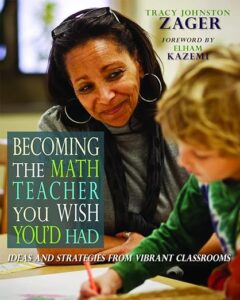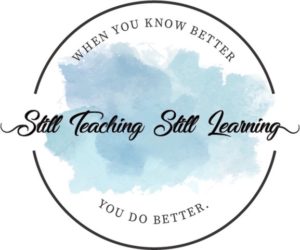
Every upper elementary teacher knows the importance of establishing norms in the classroom. Norms are the expectations for how we will work together and treat each other throughout the year. We know that the norms we establish will help to create a positive and productive learning environment.
How do we do that for our math class?



While most of the norms we set in our classrooms will work for all subjects, there are some specific norms we can establish in math that will help create the environment we want to see.
How to set norms:
~Discuss the importance of norms for math class. Explain how they contribute to a more conducive learning environment where everyone can be successful. Encourage your students to contribute ideas.
~Keep it simple! Math norms should be simple, clear, and easy to understand. Try to limit your norms to three to five.
~Model the norms yourself! When students see you practicing what you preach, they are more likely to do the same.
~Be consistent. Enforce the math norms consistently. When students violate a norm (and they will), respond promptly but respectfully.
~Keep the norms on display to serve as a reminder for both you and your students.
~Review and reinforce the norms. Adapt them as needed.
~Celebrate success when the class consistently follows the math norms. This helps motivate students to continue adhering to the norms.




Here are some suggested norms to establish in upper elementary classrooms.
How to handle “this is easy”
One of the quickest ways I’ve seen students shut down is when they’re struggling with a concept and other students are squealing about how easy it is. While we don’t want to shut down the students who are so enthusiastic about what they’re learning, we also don’t want to shut down the students who automatically decide there must be something wrong with them because they don’t find this concept easy at all.



One of my all-time favorite math resource books is Becoming the Math Teacher You Wish You’d Had by Tracy Johnson Zager. One of the (many) helpful parts of this book is how she and a collaborating teacher decided to take on “this is easy.”
Zager notes that there are two ways she has seen this phrase used. One is when students are actually saying, “I already know how to do this.” To clarify what students are actually saying, Zager and the collaborating teacher, Deborah Nichols, made an anchor chart with phrases such as these:
“This is familiar to me.”
“I used to struggle with this kind of math, but now I can do it.”
*I’ve practiced this before.”
(There are other great phrase suggestions in the book, so check it out!)




The other way that Zager and Nichols saw this phrase used was when students were learning something new or challenging. When students said, “this is easy,” they were really saying, “I just made sense out of this.” Some clarifying phrases students could say instead include:
“This seemed hard at first, but I think I can do it!”
“Oh! Now I understand the question!”
“I have an idea to try!”
(Again – there are more phrase suggestions in the book.)
Encouraging students to use these phrases (and to empathize with peers who were not feeling “this is easy”) is a great norm to establish and to reinforce throughout the year.



What is helpful/what is NOT helpful
My fifth graders and I would always make a T-chart for our math class with these headings. We would display the chart all year long. And – I never took a picture of it. 🙁
Here are some of the comments that students shared.
What is helpful:
Be kind
Be respectful
Be helpful
Encouraging comments
Everyone participating
Help each other understand
What is not helpful:
Not even trying
Not using time wisely
Making mean comments
Just giving the answer without explaining
Being distracting
Bossy people



Seven math norms to establish
Jo Boaler’s YouCubed website is one of my go-to sites for tasks and activities. This resource shares seven positive classroom norms to set for your class. The resource includes videos and activities for reinforcing the norms. (Yes, I know that seven norms exceeds my suggestion of 3-5. You could try to combine some of these, or just use the ones that are most applicable to your class.)



The seven norms she recommends:
~Everyone can learn math to the highest levels
~Mistakes are valuable
~Questions are really important
~Math is about creativity & making sense
~Math is about connections and communicating
~Math class is about learning, not performing
~Depth is more important than speed



Establishing math norms (or revising them) can be done any time of the year. They are invaluable for helping to establish a supportive, positive math community in your classroom. Please share the norms that work best in your classroom!
